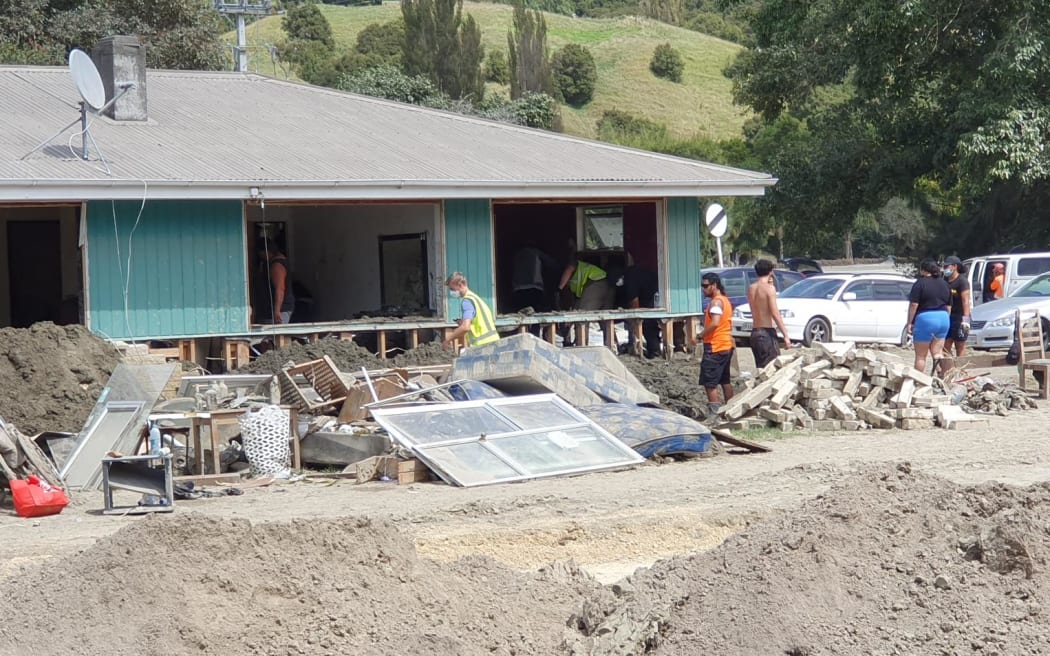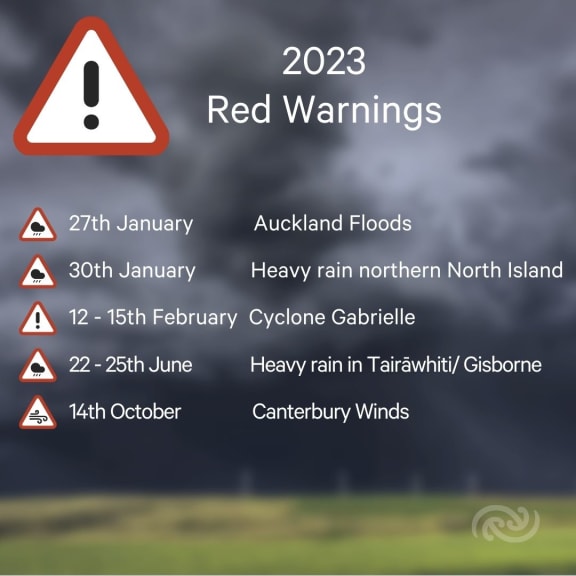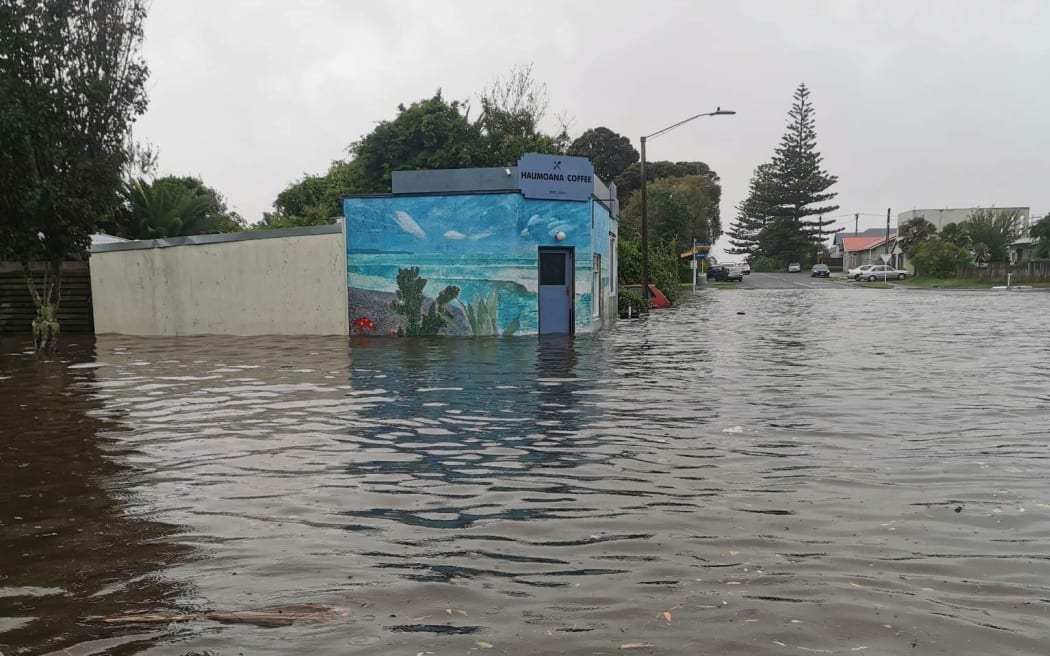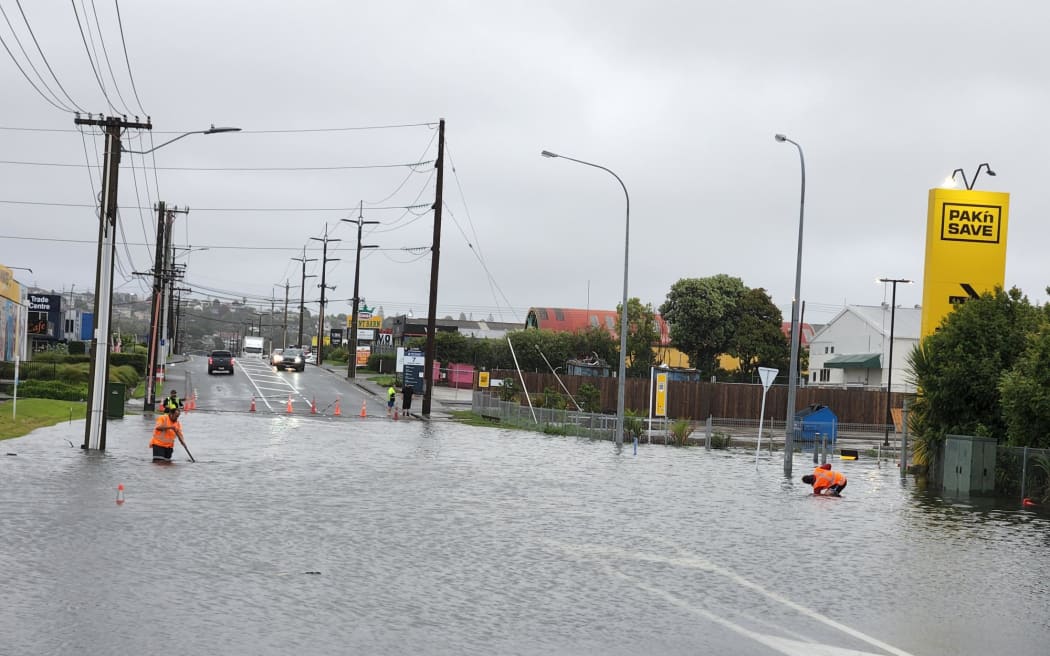
A damaged house in Esk Valley following flooding during Cyclone Gabrielle in February. Photo: RNZ / Phil Pennington
MetService says the year 2023 will be remembered as one dominated by extreme weather which impacted many lives.
The agency issued more than 300 severe weather warnings, typical for any given year, but what was not typical was that for five of these were red severe weather warnings.

MetService issued five red severe weather warnings in 2023, compared to four in 2022, three in 2021 and one in 2020. Photo: MetService
MetService issued five red weather warnings in 2023, compared to four in 2022, three in 2021 and one in 2020.
Meteorologist Mmathapelo Makgabutlane said the most prominent events include the Auckland Anniversary floods, and Cyclone Gabrielle in February, when 11 people died and countless homes were destroyed.
A nationwide state of emergency was declared on 14 February as a result of Cyclone Gabrielle - only the third time such a declaration has been made in New Zealand's history and the first in relation to weather.
In addition, the heavy rain in northern North Island in the end of January, the heavy rain in Tairāwhiti / Gisborne in June and the strong winds in Canterbury in October also received red warnings.

Flooding in Haumoana in Hawke's Bay after Cyclone Gabrielle. Photo: Supplied / Matt Goodin
Makgabutlane said since the colour-coded weather warning system was introduced in 2019, last year had the most red severe weather warnings, while 2020, 2021 and 2022 had one, three and four red severe warnings respectively.
"These red severe warnings are the most extreme and the most impactful weather warnings that we have to be able to issue and we issued five of them in one year, and four of those five happened within the first half of the year, just highlighting what a significant year 2023 was weather-wise," she said.
"We saw a lot of flooding, a lot of lives and livelihoods that were affected and impacted by the severe weather. We also saw a lot of records that were broken throughout the year, so it will definitely be one that stays in people's memories."
In January, Gisborne Airport recorded 252mm of rainfall, the wettest January since records began there in 1937.
A state of emergency was declared over the Auckland Anniversary weekend, following widespread flooding. Auckland Airport recorded 419.6mm of rain, six times its average January rainfall, making January 2023 the wettest month for the station since records began in 1962.

Flooding on Auckland's North Shore on 1 February 2023. Photo: RNZ/Mohammad Alafeshat
Also significantly impacted was the Coromandel Peninsula, where Whitianga Airport recorded 522.6mm of rain - its wettest January on record as well.
As El Niño was developing during the final month of winter, Auckland experienced its coldest month in over a decade in August, and the South Island also had below average temperatures, with Nelson recording its coldest month since 2004.
On 17 September, Wellington saw damaging winds gusting 130-165km/h - the strongest gusts recorded there in over a decade.





